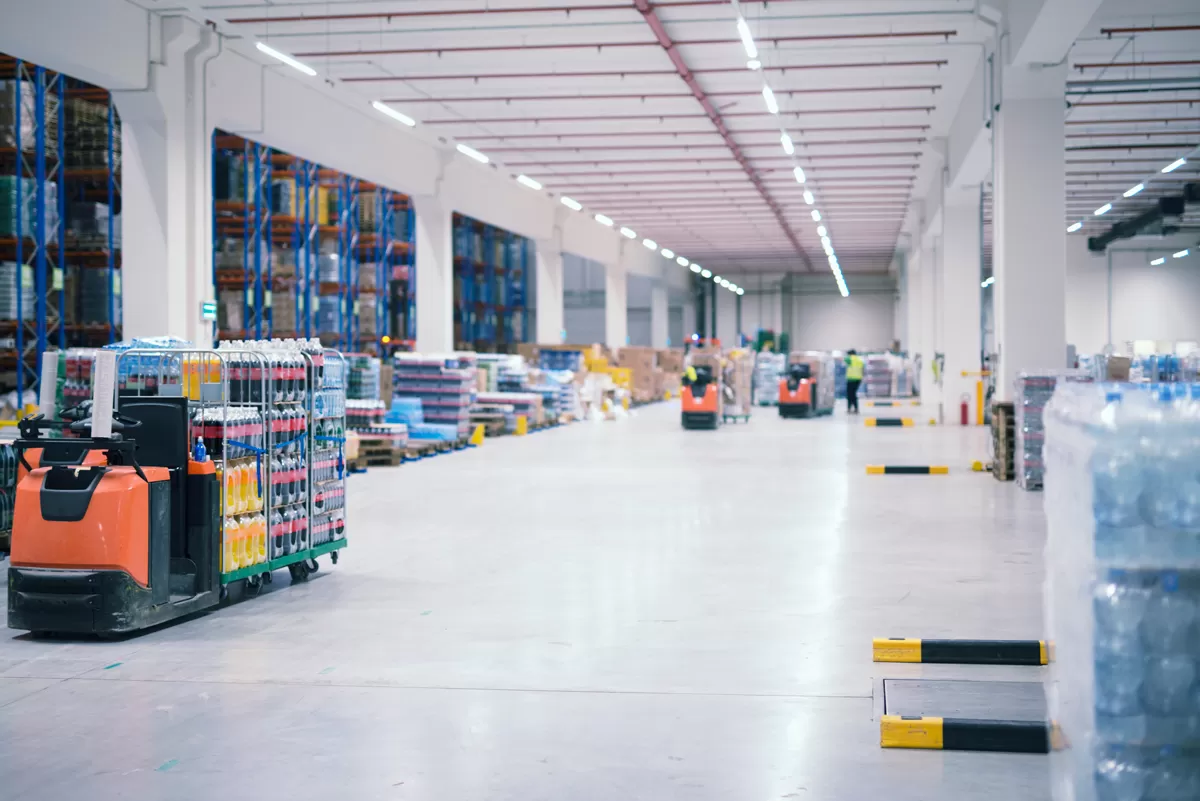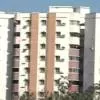PEB to take off with some more awareness of the widening array of aesthetic accessories
01 Jul 2018
9 Min Read
Editorial Team
The proliferation of pre-engineered buildings (PEBs) in recent years has led to a space occupied both by unbranded, unorganised players and reputed brands. <br />
<br />
Within this, 'the market size of the organised PEB sector is around Rs 50 Billion," according to <span style="font-weight: bold;">Arvind Nanda, CEO & Founder Director, Interarch Building Products.</span><br />
<br />
Currently, the PEB market size is around Rs 40 Billion, says PV Rao, Managing Director, Pennar Engineered Building Systems, who expects a minimum 10 per cent growth per annum in the coming years. <br />
<br />
'We expect India's PEB market to record 11.63 per cent CAGR from 2016 to 2020, to touch Rs 23,683 crore ($3.56 billion)," says <span style="font-weight: bold;">Nikhil Bothra, Director, Epack Polymers</span>. 'Of this, commercial establishments would account for Rs 9,646 crore ($1.45 billion), by registering 12.51 per cent CAGR."<br />
<br />
PEB sales are growing at about 8 per cent, notes <span style="font-weight: bold;">Ashok R Kulkarni, Managing Director, Nikitha Build-Tech.<br />
<br />
Key drivers</span><br />
Investment by multinationals and the rollout of Special Economic Zones and National Investment and Manufacturing Zones will drive the PEB sector, according to Bothra. 'We expect GST to encourage the centralisation of manufacturing units, which will increase the need for warehouses for local deliveries. Agriculture, food processing and the healthcare sector will be the key verticals to look out for. PEBs have good insulation properties that make them suitable for India's tropical climate."<br />
<br />
Foreign and multinational companies with a manufacturing base in India and logistics companies catering to organised retail and distribution are among the biggest takers for PEBs, says Nanda. Among key drivers he counts the manufacturing and warehousing sectors, followed by steel and cement plants needing large-span structures.<br />
<br />
'In the non-industrial building application sector, we expect to do more PEBs for healthcare, offices, malls, stadiums and auditoriums, educational uses, and hospitality uses, especially in hills and holiday resorts," says Nanda. 'Additional floors on existing buildings can also be constructed with this technology."<br />
<br />
Rao believes the warehousing segment is growing fast after the introduction of GST and increase in e-commerce; automobile and its ancillaries are also doing well.<br />
'We're seeing huge demand for steel construction for warehouses, convention centres, multipurpose halls, factories, and vertical rise for schools, offices and residential purposes," says <span style="font-weight: bold;">Shiva Kumar, General Manager, Marketing, Ambient Controls. </span>'Pre-engineered construction technology is suitable for greenfield as well as brownfield applications."<br />
<br />
In Bengaluru, it is common for individuals and organisations to take land on lease as opposed to an outright procurement of land, he observes. 'Pre-engineered construction especially suits such arrangements because the built-up space can be dismantled any time and the materials reused."<br />
<br />
'Containers, homes, villas with steel structures and extensions to resorts are some of the areas we are tapping as PEBs are easier to customise than RCC buildings," says <span style="font-weight: bold;">Sandeep Patil, Senior Manager, Sales & Operations, Champion Prefabs.</span> 'Demand for PEBs is highest in Mumbai, Bengaluru, Gurgaon, Kerala and across hill stations."<br />
Pre-engineering technology is as applicable for infrastructure as for buildings, notes Nanda. <br />
<br />
So, opportunities could also lie in infrastructure segments. Interarch has recently completed a hostel building and laboratory building for Thapar University in Punjab as well as delivered bridge girders for the Delhi Metro Rail Corporation and a metro depot for the Mumbai Metro.<br />
<br />
<span style="font-weight: bold;">Growth dimmers</span><br />
Price is the biggest constraint to the growth of the PEB sector. 'Our turnkey project prices vary from Rs 1,550 per sq ft to Rs 3,200 per sq ft, which is higher than reinforced cement concrete (RCC) buildings, says Patil. 'Also, the need to use imported materials to achieve longevity of the structure and interiors is a challenge."<br />
'PEBs still cost about 20 per cent more than standalone RCC buildings; the technology would benefit from investments in design solutions that reduce this price differential," agrees <span style="font-weight: bold;">Amol Prabhu, Partner, Shashi Prabhu & Associates (architects).</span>Subject to sustained overall economic growth and, in particular, government spending on infrastructure, Nanda expects the organised PEB opportunity to grow at 20-30 per cent. To grow the sector faster, he believes large-scale private investment needs a boost.<br />
<br />
If domestic consumption and exports increase, manufacturing companies will expand their facilities, increasing the demand for PEBs; then, 12-13 per cent growth of the segment is also likely, according to Rao. 'Thermal steel plants projects are not happening in view of the push to solar projects; this is another challenge."<br />
Shiva cites rising commodity prices, in particular, steel, as a challenge.<br />
'Variation in steel price and unhealthy competition from fabricators who compromise on quality are the biggest threats to the greater adoption of PEB technology," adds Kulkarni.<br />
<br />
<span style="font-weight: bold;">Multi-storey PEBs</span><br />
Pre-engineered technology is not product-based but building-based, says Nanda, implying that the sector's R&D initiatives revolve around new types of buildings and applications that can be constructed. In recent years, Interarch has pushed the boundaries of possibilities by delivering the first G+7 multi-storey hospital in pre-engineered steel for Fortis Healthcare in Bengaluru. <br />
<br />
PEB technology is now being routinely applied for high-rise construction, says Shiva. Ambient Controls has delivered a G+7 steel building but he says the possibility is easily up to 15 storeys and higher.<br />
<br />
So far, we have seen more commercial applications of PEB technology for multi-storey buildings, notes Kulkarni. 'A developer in Hyderabad has applied the technology for a block of apartments but more developers need to see the benefit in the technology for such applications to grow. A steel structure costs more to build upfront but delivers savings from being built much faster. To further adoption, we are working on economical ways to enhance the load-carrying capacity of multi-storey PEBS."<br />
<br />
<span style="font-weight: bold;">Aesthetic accessories</span><br />
Correlated to the greater adoption of PEB technology for non-industrial purposes is the use of aesthetic materials for elevation, cladding, interiors, roofing, etc.<br />
Adopters of steel construction have grown increasingly conscious about the front elevation and aesthetics; clients don't appreciate PEBs with sloped roofs, points out Kulkarni. 'We're focused on offering innovative solutions for the fatade and aesthetics, including leak-proof solutions for the door and window cut-outs. <br />
<br />
Now, we have a much better choice and design of masonry trims, flashings, etc. We are also working on zero-leakage roofing with a standing seam that eliminates the need to puncture the sheet with self-drilling screws."<br />
<br />
'Aesthetic walling materials for commercial and residential PEBs include PUF/sandwich panels with a glossy look or lightweight cement bricks," says<span style="font-weight: bold;"> Salam Choudhary, Manager, RS Steel India.</span><br />
<br />
'Glasswool and rockwool panels for cladding have tremendous insulation capabilities, which lead to cost and energy savings besides contributing to the aesthetic appeal of buildings," opines Bothra.<br />
<br />
There is no limit to the possibilities of cladding used for PEBs, as long as the intent is factored into the building structure so that the cladding weight is taken into consideration, says Prabhu, listing some of the materials he has used in PEBs: 'Decorative bricks, plaster finishes, aluminium composite panel, glass reinforced concrete, exposed RCC, stone, ceramic tiles and high-pressure laminates. Some of these materials need a steel base."<br />
<br />
As residential and commercial buildings have a much smaller span than industrial buildings, the cost differential from choosing higher grade materials to wrap around the building isn't so high, says Shiva, explaining that 'steel-framed buildings can be wrapped with sheets of steel, PUF, galvalume, zinc, aluminium and copper. <br />
All of the latter options are more expensive than steel, but this higher cost is not so pronounced for small areas."<br />
<br />
'Roofing options include coated galvalume sheet in various colours with skylights in polycarbonate, if needed to let in natural light through the roof and wall," says Choudhary. 'Coated galvalume sheet lasts a long time and is twice as strong as the average roof. Essar, Bhushan, Jindal and Tata Bluescope are the preferred options for sheeting, while decks are used to create mezzanine levels." <br />
<br />
<span style="font-weight: bold;">Innovations in PEBs</span><br />
Epack has been promoting hybrid technology-based solutions combining steel with light gauge steel and different cladding materials. Its new products include the prefabricated e-house, Mi homes and rockwool panel manufacturing.<br />
'Champion Prefabs offers five to 10-year maintenance contracts that help assure customers of quality and longevity," says Patil. Another soon-to-be released innovation from Champion Prefabs is aluminium residences.<br />
<br />
All considered, as long as PEB innovations are ongoing as expected -in fact, Patil believes the sector will soon see an influx of overseas brands -demand is sure to take off eventually.<br />


















